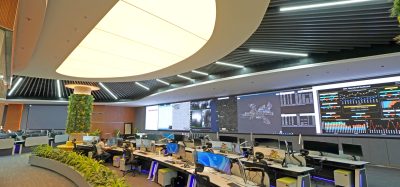How AI and smart funnels are optimising the passenger experience
Posted: 16 January 2025 | Aviation Solutions | No comments yet
Tijn Borms, Product Director of Travor at Aviation Solutions, shares how airports use the platform to reach and support passengers in the terminal. He touches on the platform’s rapid growth, its modular design that adapts to diverse international airport needs, and the balance between human assistance and automated solutions.
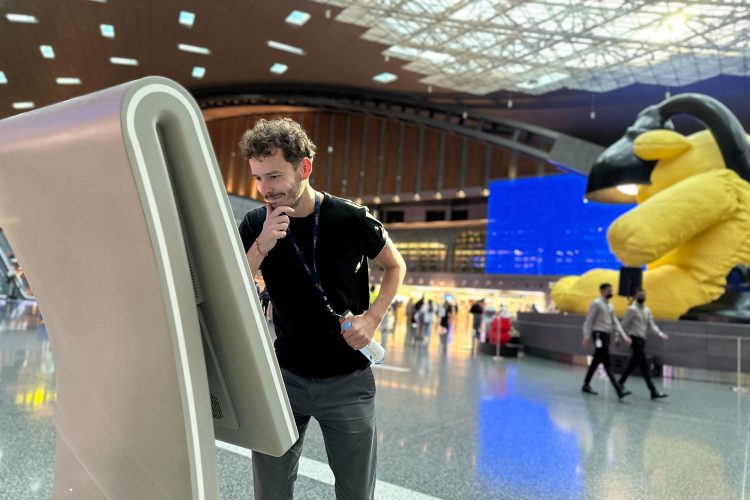

Emergency or Heineken lounge
“Help, I’m flying to the other side of the world soon, but I don’t have a visa!” – It’s a situation Schiphol’s service staff encouter quite often, but this was a unique case. The traveller urgently needed to fly to a country in Latin America because her sister had just been admitted to the hospital there. Due to the haste and stress, she hadn’t thought about needing a visa to fly. As a result, she was at risk of missing her flight.
Fortunately, the traveller was able to request personal assistance through Travor. That’s when a service team member stepped in. The solution required persistence, a touch of creativity, and, most importantly, the colleague’s network at the airport. Ultimately, the visa was arranged just in time, which allowed the distressed traveller to make her flight.
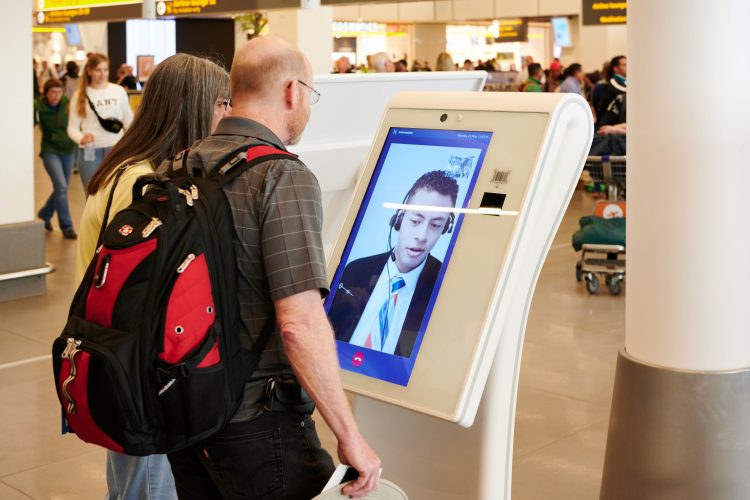

But Schiphol, one of the airports using Travor, has up to 70,000 travellers a day. How do you ensure that people in emergency situations receive personal assistance, while other travellers who simply want to know where to find a beer in the Heineken Lounge are also well-served?
According to Borms, the answer lies in AI technology and the funnel approach made possible by the Travor platform.
A scale-up within Schiphol
Two years ago, Tijn Borms was appointed as the Product director of Travor, a new airport-focused solution with the primary goal of optimising the passenger experience.
The Travor platform offers access to digital maps of the terminal, information about points of interest, personalised route guidance from arrival to boarding, answers to frequently asked questions, airport information, and, if needed, virtual (video) support from a staff member.
It is accessible via kiosks in the terminal and as a web app for mobile phones, laptops, and iPads. The platform has a modular design which allows airports to easily adapt the platform to their own specific needs. They can choose to implement the full platform or only specific parts.
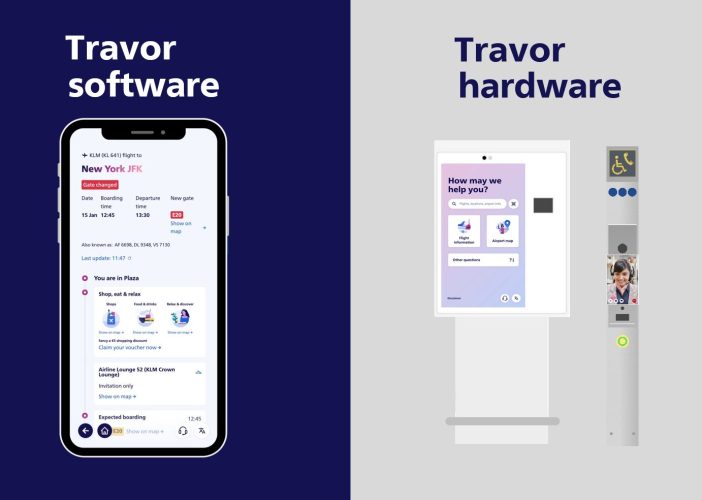

When Borms started, the product was still in its early stages, and much has changed since then. His decision to join Aviation Solutions, a subsidiary of Schiphol Group with the mission to make proven products available to other airports, came from various factors: “I had a lot of experience in tech startups and scale-ups. But the chance to build something at Aviation Solutions from the ground up with the backing of a large corporation like Schiphol and to challenge the status quo appealed to me a lot”.
Borms has definitely been able to put his experience to use: The Travor platform grew from 25,000 users per month to over one million. Its functionalities have expanded significantly, and today the platform is also used by multiple international airports alongside Schiphol.
Fastlane to growth
Initially, Travor only offered basic functions like flight information, a simple map, frequently asked questions, and a video call option, Borms explains. But many of these functions were bootstrapped, which made the platform hard to manage and posed significant challenges for development and scaling.
“For each function, like the map or video calling, we had to find separate vendors and perform costly custom integrations, which led to high costs and long development times”. By developing more functions in-house and standardising them, Travor also became more appealing to other airports.
The product was made more robust and modular and all components are now seamlessly integrated. This allows for faster delivery while maintaining high quality. Additionally, its straightforward implementation supports multiple use cases within a single platform which enables airports to streamline operations and significantly reduce costs.
This approach has paid off: the introduction of Travor at Amsterdam Airport Schiphol resulted in a higher-rated level of support while reducing staffing requirements by 30%. In addition to Schiphol, Hamad International Airport, and Frankfurt Airport are also using the platform, and Athens Airport is set to launch in the first half of 2025.
At Hamad International Airport, the Self-Service Units currently reach about 10% of all departing passengers. Over 95% of them report they had a positive user experience.
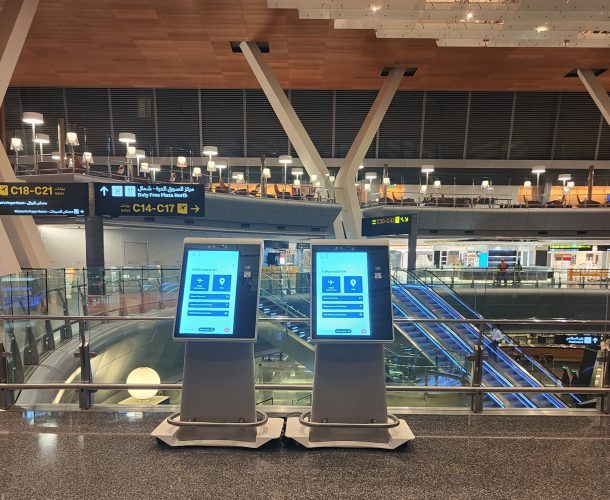

Impact through accessibility
Alongside expanding and integrating its functions, the platform also became more accessible. “It’s great to improve a product, but a product only has an impact when it’s used by many people.”
Where Travor started as a kiosk solution, it has now evolved into an omnichannel platform accessible via kiosks, mobile devices, and desktops. At Schiphol, it’s also the starting point after connecting to the free WiFi. And by offering QR codes in the terminal, passengers can easily find their way to the information they need. This increased the platform’s reach significantly.
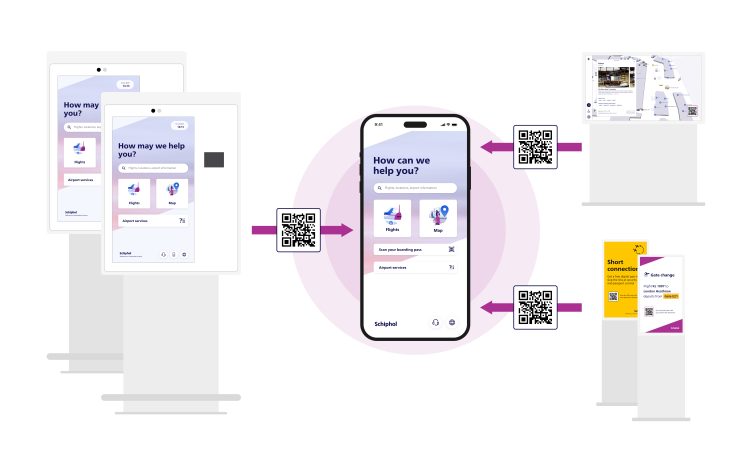

However, the rapid growth also brings challenges. “It’s great that the platform continues to grow, but we don’t want to tell an airport that they suddenly have to hire 40 new agents to keep up with the demand for video-calls”. Efficiently deploying existing agents is therefore crucial. That’s where the ‘funnel approach’ comes in.
The funnel approach
According to Borms, the funnel approach is based on four pillars: triage, empowerment, automation and optimisation.
Triage focuses on “selection at the gate”: travellers receive exactly the information they need. It is targeted and personalised where the platform can make the most impact, as each situation requires a specific approach.
“A traveller looking for Starbucks for a coffee has a different support need than parents who’ve just been informed their lost child has been found at a Starbucks.”
While the goal in both cases is the same – finding Starbucks – the context calls for an adapted approach. “In the first case, a personalised offer might be appropriate, while in the second, speed and support take priority. The platform must be able to make that distinction.”
Furthermore, Borms says it’s most valuable to allocate resources to travellers whose customer satisfaction score can be raised the most significantly. Currently, the video call support is the highest-rated support channel, with an impressive 4.6 out of 5 score. “Raising a traveller’s score to a 5 would be nice, but with an airport’s limited resources, the priority lies in finding the biggest improvements.”
When escalation to a video call is needed, the airport’s staff – their ‘superheroes’ – must be equipped with ‘superpowers’ to handle it efficiently, he says. At this point, the second pillar ‘empower’ becomes relevant.
Humans to be replaced by AI?
In almost every industry, companies are looking at how AI can improve their organisation. Aviation Solutions is also actively leveraging AI. But Borms says they take a slightly different approach than many other organisations. “I often refer to Karim Lakhani’s quote: ‘We won’t be replaced by AI, but by people who use AI.’”
He emphasises that human intervention remains indispensable in some situations. “Think of the traveller who urgently needed to go to Latin America but forgot to get a visa while the gate was about to close. Such a situation can only be resolved through human knowledge, network, and empathy. In stressful situations, I think people would rather be helped by a person than a chatbot or AI avatar.”
At Aviation Solutions, the power of AI is currently focused on enhancing operator capabilities with ‘superpowers.’ For example, the aim is to enable automatic translation during video calls, which makes it possible to assist a Japanese traveller without a language barrier. The system is also being developed to recognise when a traveller is searching for a particular store and preload a map that the operator can simply drag into the chat.
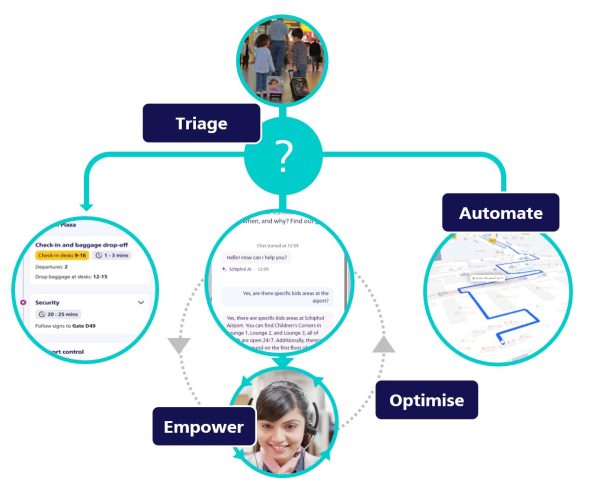

What about automation and optimisation?
Borms says AI also offers opportunities for time savings in administrative tasks. Where a video conversation currently averages three minutes, the administration afterward also takes three minutes. By automating this administration, operators can double their efficiency, he explains. “That’s a really impressive improvement, and more importantly it doubles the impact of our agents”.
Finally, AI can be used for automatic transcriptions and summaries of conversations, which provide valuable insights. These insights enhance the triage process by serving as an additional filter. It can also generate new “knowledge” that can be integrated into articles or chatbots and enrich the information available to travellers. This continuous feedback loop makes the funnel increasingly effective.
The press of a button
What does the future hold? According to Borms, it lies in a highly personalised experience for passengers, with the Travor platform increasingly using AI and automation.
He envisions a future where passengers can easily request assistance with the press of a button, and the system determines whether a passenger can be helped automatically or needs to be connected with a staff member, depending on the complexity and urgency of the request.
With over 160 million travellers passing through airports supported by Travor, the platform’s potential for personalised assistance and scalability is immense. And through ongoing discussions with new airports who are implementing Travor, the platform’s reach continues to grow. With this rapid growth and continuous improvement, Borms is essentially still working in a fast moving scale-up – albeit with the backing of a large airport like Schiphol.
Related topics
Accessibility, New technologies, Non-aeronautical revenue, Passengers with reduced mobility (PRMs)
Related airports
Frankfurt Airport (FRA), Hamad International Airport (HIA), Schiphol Airport




